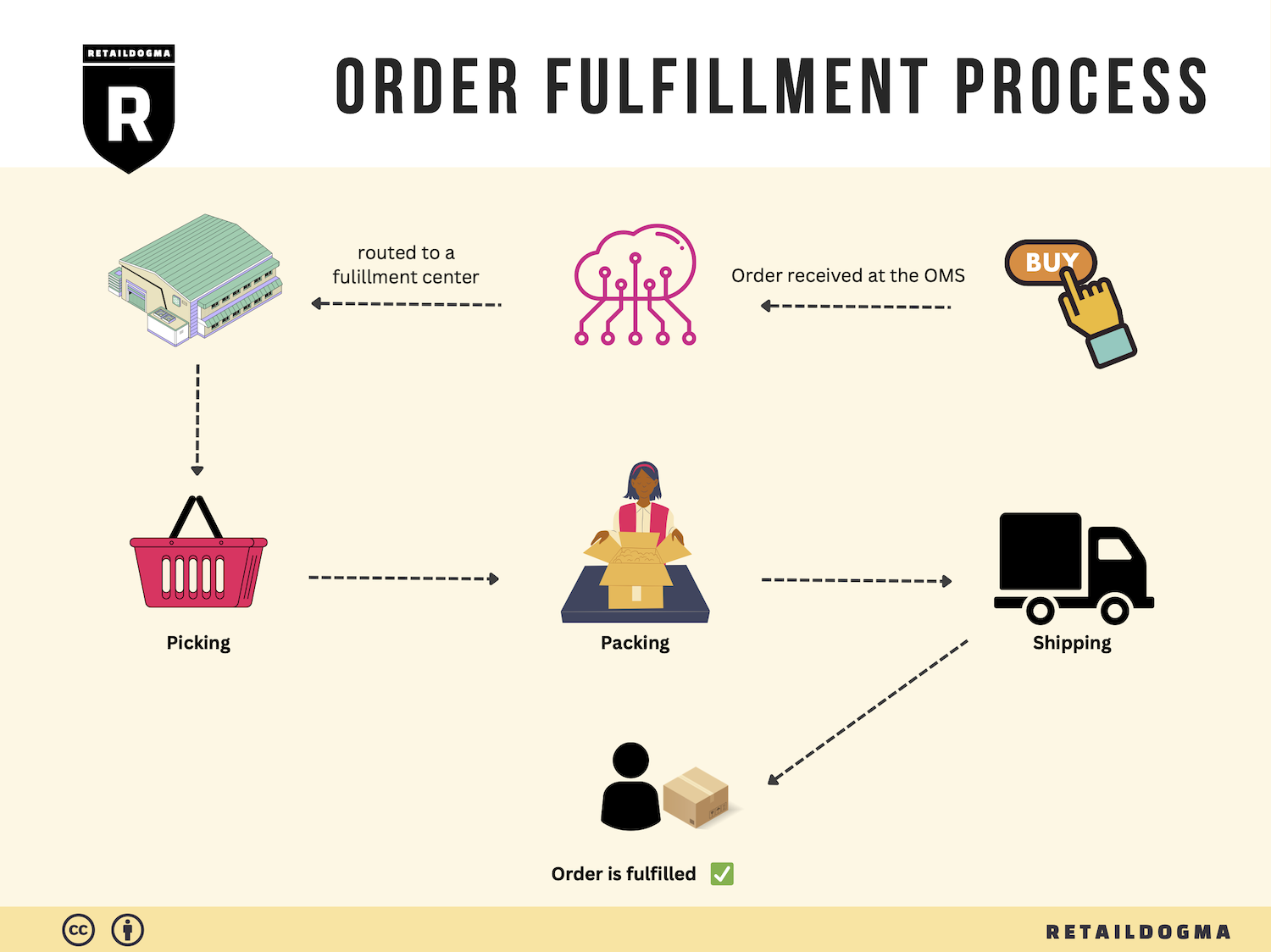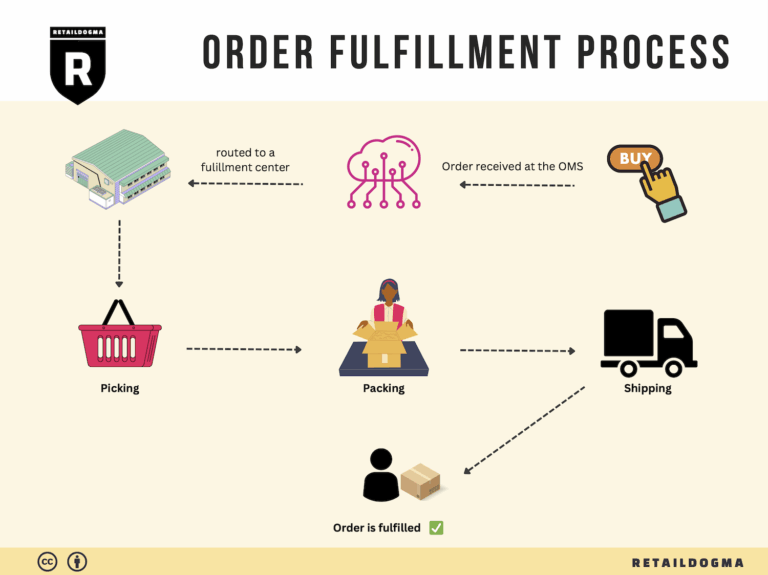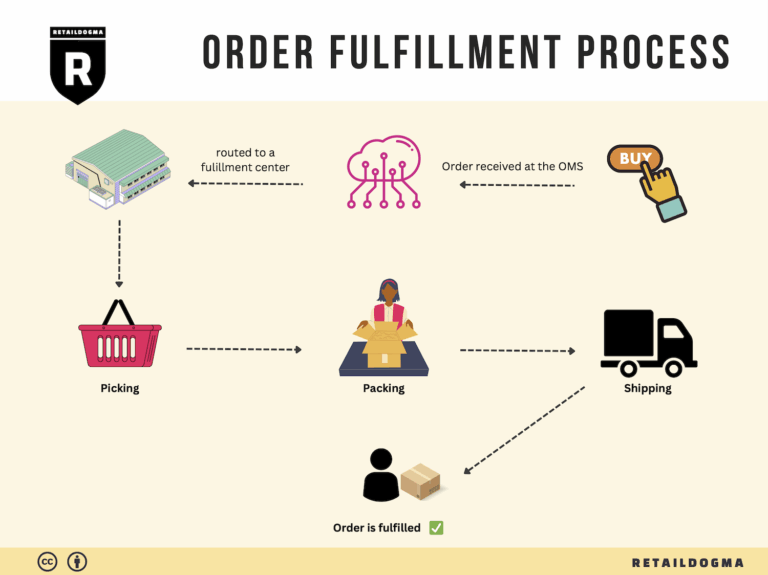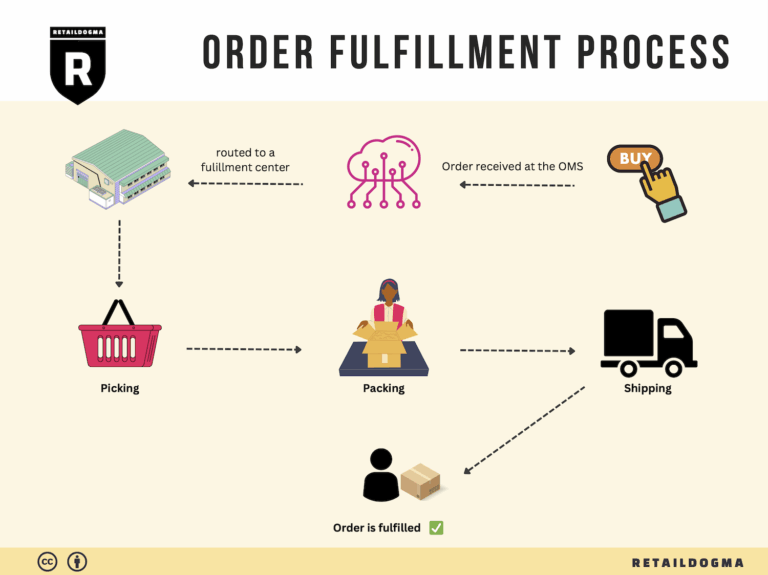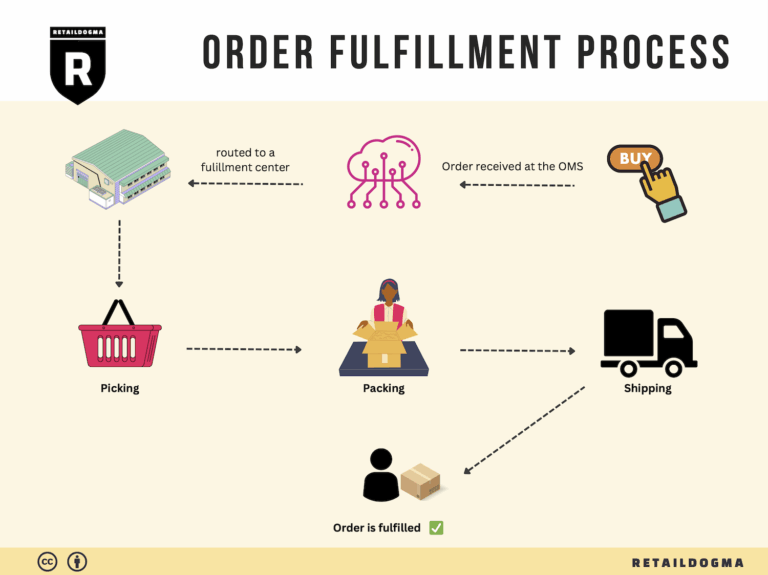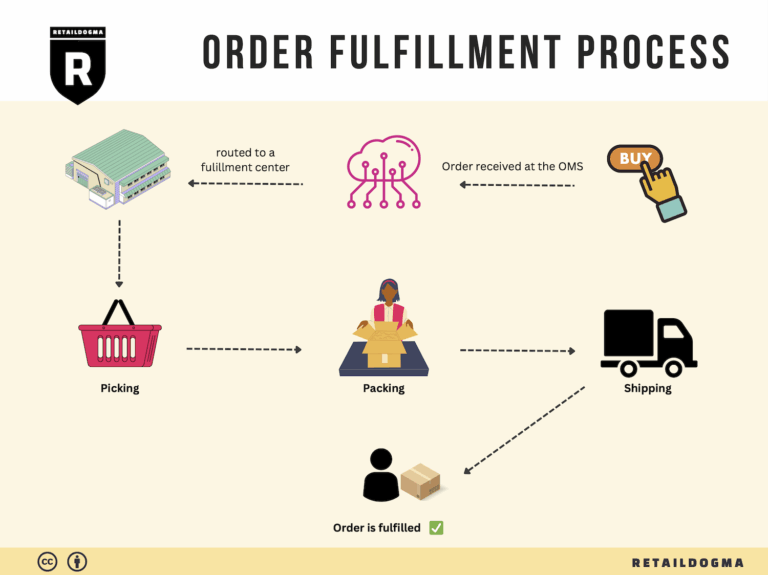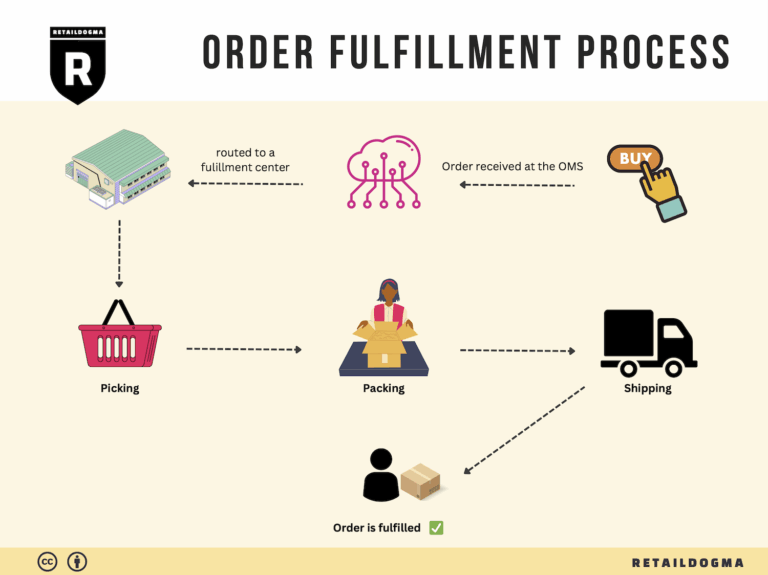What Is A Fulfillment Center? A Complete Guide (2025)
What is E-commerce Fulfillment? An Introduction for Growing Businesses
Navigating the Complexities of E-commerce Fulfillment
As an e-commerce business owner, you may find yourself buried under the weight of packing and shipping orders, especially during peak seasons. Managing logistics can quickly become overwhelming, diverting your focus from core business activities like marketing and product development. This is where a well-structured fulfillment strategy comes into play.
Fulfillment, in its simplest form, refers to the entire process of getting a product into the hands of a customer. It begins the moment a customer places an order and extends through various stages, including inventory management, order processing, packing, shipping, and even handling returns. Each step is crucial in ensuring that your customers receive their products promptly and in excellent condition, which directly impacts customer satisfaction and repeat business.
In this guide, we will delve into the different fulfillment models available to you, such as Third-Party Logistics (3PL) and Fulfillment by Amazon (FBA). Each model has its own advantages and challenges, and understanding these will help you choose the best fit for your business needs.
We will explore the core services involved in e-commerce fulfillment, including inventory management, order processing, and shipping logistics. Additionally, we will provide insights into how to select the right fulfillment partner, emphasizing the importance of aligning their capabilities with your business goals and customer expectations.
Pricing is another critical aspect we will cover. Fulfillment costs can vary significantly based on the model you choose and the services you require. We will offer practical tips for budgeting and forecasting these expenses to ensure your fulfillment strategy remains financially viable.
The ultimate goal of this guide is to empower you to make informed decisions about your logistics operations. By understanding the complexities of e-commerce fulfillment, you can streamline your processes, reduce operational headaches, and focus on scaling your business effectively. Whether you’re just starting or looking to refine your existing fulfillment strategy, this comprehensive guide will equip you with the knowledge you need to succeed in the competitive e-commerce landscape.
What You’ll Learn In This Guide
- What is E-commerce Fulfillment? An Introduction for Growing Businesses
- The Order Fulfillment Process: From ‘Buy’ Button to Customer’s Door
- Comparing Fulfillment Models: In-House vs. 3PL vs. Dropshipping
- A Deep Dive into Amazon FBA: Pros, Cons, and Who It’s For
- Core Services Offered by Fulfillment Centers
- How to Choose a Fulfillment Partner: A 6-Point Checklist
- Understanding Fulfillment Pricing: A Breakdown of Common Fees
- Frequently Asked Questions (FAQs) about Fulfillment
- Conclusion: Is Outsourcing Fulfillment the Right Move for Your Business?
- Important Disclaimer
The Order Fulfillment Process: From ‘Buy’ Button to Customer’s Door
1. Receiving Inventory
The order fulfillment process begins with receiving inventory, which is a crucial step that involves checking and accepting products from suppliers or manufacturers. During this phase, items are inspected for quality and quantity against the purchase order to ensure that everything matches. Any discrepancies or damages should be documented and addressed immediately.
This step is vital because accurate receiving sets the foundation for effective inventory management. If errors occur during this phase, they can cascade through the entire fulfillment process, leading to stockouts or overstock situations. To streamline this process, businesses often use Stock Keeping Units (SKUs) to track individual items. Each product is assigned a unique SKU, which simplifies identification, organization, and management throughout the supply chain.
2. Warehouse Storage
Once inventory is received and verified, the next step is warehouse storage. This involves placing products in designated areas within the warehouse or fulfillment center for easy access. Effective storage solutions are essential to optimize space and facilitate quick retrieval when orders are placed.
Proper organization can include using shelving units, bins, or pallet racking systems, and employing methods like ABC analysis to categorize inventory based on sales volume. This categorization helps businesses prioritize space allocation for high-demand items. Efficient warehouse storage is crucial because it impacts the speed and accuracy of order picking, ultimately influencing customer satisfaction and operational costs.
3. Order Picking
With products securely stored, the next step is order picking, where warehouse staff or automated systems retrieve the items needed to fulfill a customer’s order. This process typically starts when an order is placed, triggering a pick list that details the items and their locations within the warehouse.
Order picking is significant because it directly affects the order fulfillment speed and accuracy. Errors during this phase, such as picking the wrong item or quantity, can lead to customer dissatisfaction and increased return rates. Utilizing technology like barcode scanners can enhance accuracy and efficiency by minimizing human error and streamlining the picking process. Moreover, optimizing the picking route can reduce time spent searching for items, further improving operational efficiency.
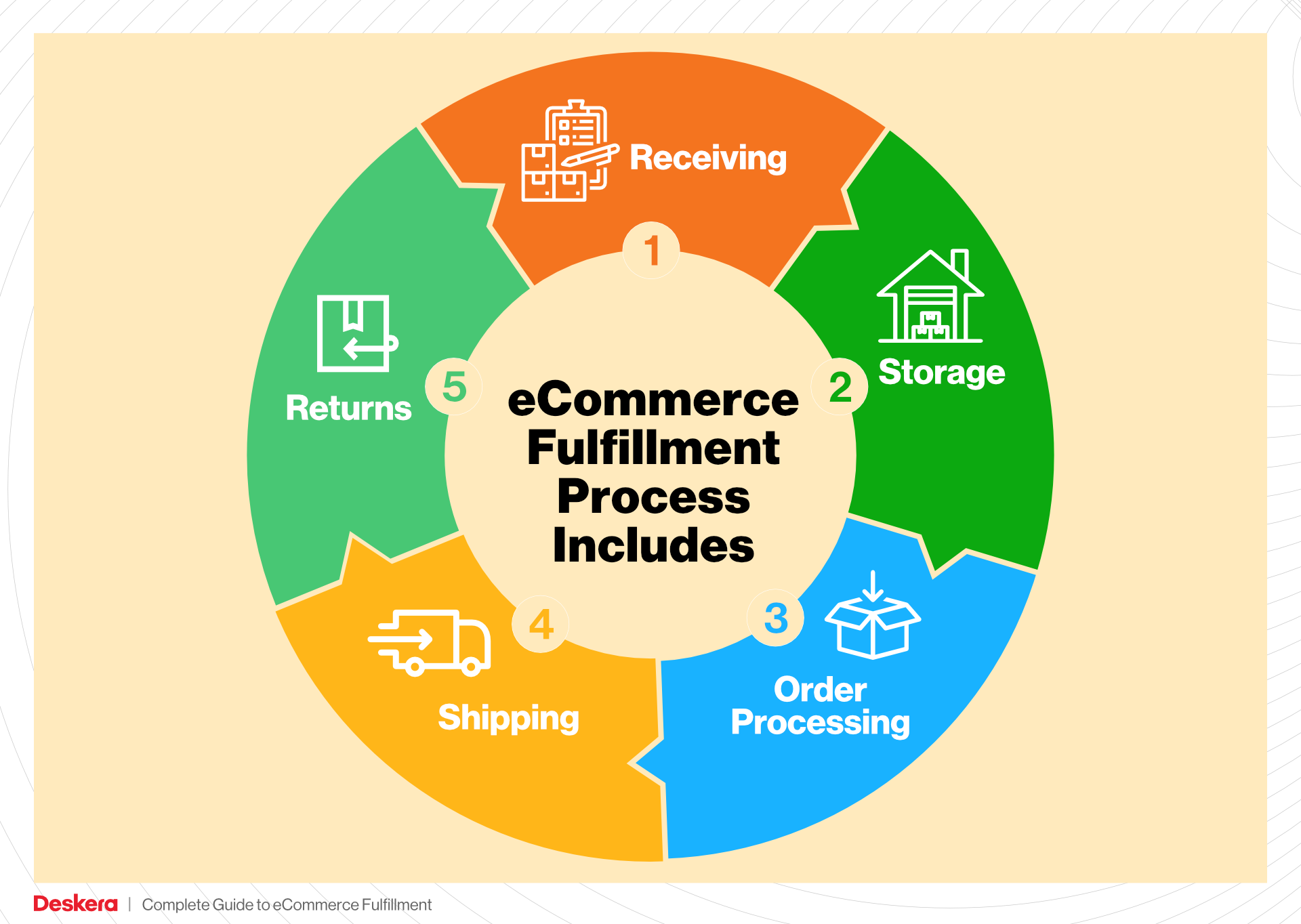
4. Order Packing
After items are picked, they move to the order packing stage. This step involves carefully packaging products to ensure they arrive safely at the customer’s doorstep. Proper packing is essential to protect items from damage during transit, and it also serves as an opportunity to enhance branding through custom packaging.
During packing, businesses should consider factors such as dimensional weight for shipping costs and the use of appropriate packing materials. Efficient packing processes often include packing slips, which provide customers with order details and enhance transparency. This step is crucial as it directly influences the customer experience; well-packed orders lead to higher satisfaction and lower return rates.
5. Shipping & Delivery
The final step in the order fulfillment process is shipping and delivery. Once orders are packed, they are handed over to carriers for transportation to the customer. This phase involves selecting shipping methods and carriers that balance cost and speed, as customers increasingly expect fast, reliable delivery options.
Providing customers with tracking information enhances their experience, allowing them to monitor their orders in real-time. Additionally, understanding shipping terms such as last mile delivery—the final step in the delivery process—can help businesses optimize their logistics strategy. Effective shipping and delivery are critical as they can significantly impact customer loyalty and repeat business; timely and accurate deliveries foster trust and enhance the overall shopping experience.
By understanding and effectively managing these five key steps of the order fulfillment process, e-commerce businesses can improve operational efficiency, reduce costs, and ultimately enhance customer satisfaction. Each step plays a pivotal role in ensuring that the journey from the ‘buy’ button to the customer’s door is seamless and satisfactory.
Comparing Fulfillment Models: In-House vs. 3PL vs. Dropshipping
Fulfillment Model Comparison
| Model | Who Handles Inventory | Best For (Business Stage) | Key Advantage | Key Disadvantage |
|---|---|---|---|---|
| In-House Fulfillment | The business itself | Established businesses with stable volume | Complete control over inventory and branding | High initial investment and resource-intensive |
| Third-Party Logistics (3PL) | Third-party logistics provider | Growing businesses needing to scale quickly | Cost-effective and scalable logistics solutions | Less control over the fulfillment process |
| Dropshipping | Supplier or manufacturer | Startups and businesses testing the market | Low overhead costs and no inventory management | Lower profit margins and potential quality issues |
In-House Fulfillment
In-house fulfillment means managing the entire logistics process within your own facilities. This model allows businesses to have complete control over their inventory, packaging, and shipping processes. This level of oversight can lead to improved inventory management, as business owners can directly monitor stock levels and respond to fluctuations in demand. Customizing packaging and inserts also enhances branding opportunities, allowing for a more personalized customer experience. However, this model requires significant investment in infrastructure, technology, and staffing, which can be resource-intensive. As order volumes increase, scaling operations can become challenging and costly. Thus, in-house fulfillment is best suited for established businesses with stable order volumes, high margins, and specific branding needs that may not be easily outsourced.
Third-Party Logistics (3PL)
Third-party logistics providers offer a solution for businesses that are growing but do not yet have the resources or capacity to manage fulfillment in-house. By outsourcing logistics to a 3PL, businesses can focus on core activities such as product sourcing and marketing while benefiting from the expertise and technology that these providers bring. 3PLs typically have established systems for inventory management and shipping, which can lead to fewer errors compared to new or smaller operations. Moreover, this model is scalable, allowing businesses to adapt to changing order volumes without the burden of maintaining excess infrastructure. However, one of the key drawbacks is that businesses relinquish some control over the fulfillment process, which can impact the customer experience if the 3PL’s operations do not align with the company’s standards. Additionally, while 3PLs can reduce upfront capital investment, ongoing costs can accumulate, especially if order volumes are low. This model is ideal for growing businesses that need to scale quickly and manage fluctuating demand.
Dropshipping
Dropshipping is a fulfillment model where the retailer does not keep goods in stock. Instead, when a product is sold, the retailer purchases the item from a third party—typically a supplier or manufacturer—who then ships it directly to the customer. This model is particularly attractive for startups and entrepreneurs looking to test the market without the financial burden of inventory management. The primary advantage of dropshipping is the low overhead costs, as there is no need to invest in warehousing or stock. However, it comes with its own set of challenges. Since the retailer does not handle the inventory directly, they have less control over product quality and shipping times, which can lead to customer dissatisfaction. Additionally, profit margins can be lower compared to other models, as suppliers often charge higher prices for dropshipped items. This fulfillment strategy is best suited for businesses that are just starting out or those looking to diversify their product offerings without significant investment.
In summary, choosing the right fulfillment model hinges on various factors, including business size, growth stage, budget, and customer experience priorities. Each model presents unique advantages and challenges, and understanding these can help e-commerce business owners make informed decisions as they scale their operations.
A Deep Dive into Amazon FBA: Pros, Cons, and Who It’s For
Understanding Fulfillment by Amazon (FBA)
Fulfillment by Amazon (FBA) is a service that allows e-commerce sellers to store their products in Amazon’s fulfillment centers, where Amazon takes care of storage, packaging, shipping, and customer service on behalf of the seller. This service is particularly appealing to businesses looking to streamline their logistics and leverage Amazon’s vast reach and efficiency.
How FBA Works
-
Product Storage: Sellers send their products to Amazon’s warehouses. These fulfillment centers are strategically located to optimize shipping times and costs.
-
Order Processing: When a customer orders a product, Amazon picks, packs, and ships the item directly to the customer. This process is automated and designed for efficiency.
-
Customer Service: Amazon handles all customer inquiries, returns, and refunds related to FBA orders. This allows sellers to focus on their core business activities without getting bogged down in customer service issues.
-
Multi-Channel Fulfillment: Sellers can use FBA to fulfill orders from various sales channels, not just Amazon. This means that if a seller has their own website or sells on other platforms, they can still utilize Amazon’s logistics network to fulfill those orders.
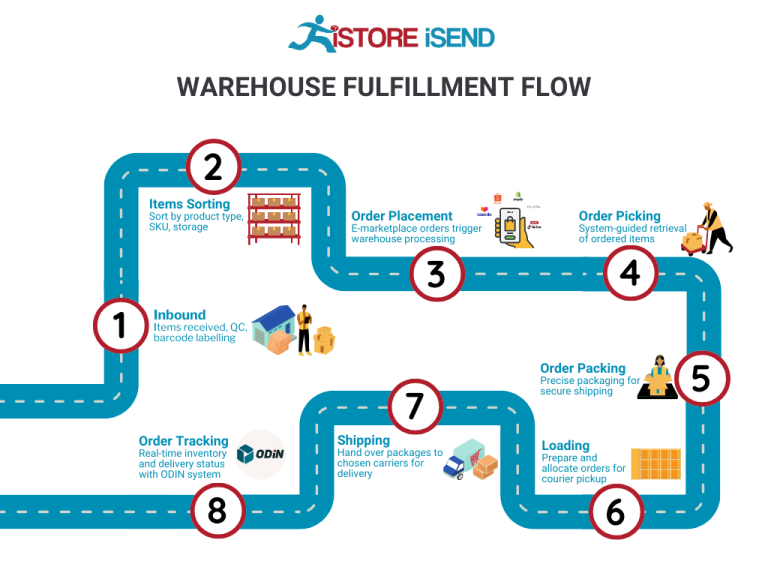
Pros of FBA
-
Prime Eligibility: Products fulfilled by Amazon are automatically eligible for Amazon Prime, which can significantly increase sales. Prime members often prefer Prime-eligible products due to the benefits of free and fast shipping.
-
Customer Trust: Amazon is a well-established brand known for its customer service and reliability. By using FBA, sellers can leverage this trust, which can lead to higher conversion rates and customer loyalty.
-
Scalability: FBA allows businesses to scale without the need for significant investment in warehousing and logistics. As order volumes increase, sellers can easily send more inventory to Amazon without worrying about the complexities of storage and shipping.
-
Simplified Logistics: FBA handles all aspects of order fulfillment, allowing sellers to focus on sourcing, marketing, and growing their business. This can be particularly beneficial for smaller businesses or entrepreneurs who may not have the resources to manage logistics effectively.
-
Multi-Channel Fulfillment: Sellers can manage orders from various platforms using FBA, making it a versatile solution for businesses that operate on multiple sales channels. This helps streamline operations and maintain consistency in shipping and customer service.
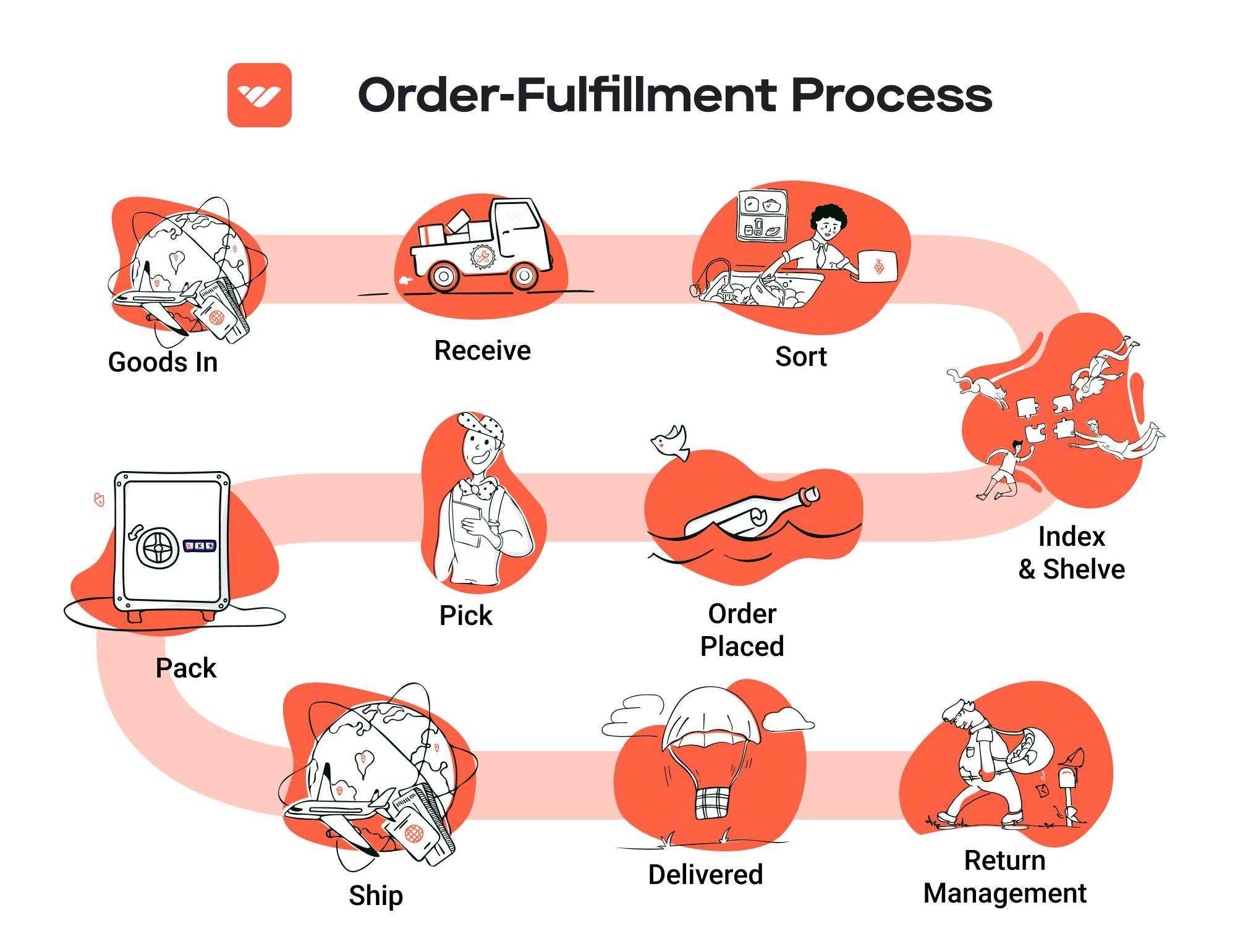
Cons of FBA
-
High Fees: While FBA can save time and effort, it comes with costs that can eat into profit margins. Sellers must pay for storage space, fulfillment fees, and additional costs for returns and long-term storage. These fees can add up, especially for slow-moving products.
-
Strict Inventory Rules: Amazon has specific rules regarding inventory management. Sellers must adhere to guidelines about inventory levels, storage limits, and product conditions. Failure to comply can result in penalties, including additional fees or removal of inventory.
-
Commingling Risks: FBA uses a system called commingling, where products from different sellers are stored together. This can lead to issues if a seller’s product is returned or damaged, as it may be difficult to track and manage individual inventory. Additionally, there’s a risk of receiving counterfeit or defective products from the shared inventory.
-
Limited Control: By outsourcing fulfillment to Amazon, sellers relinquish some control over the shipping process, which can impact the customer experience. Issues such as shipping delays, packaging quality, and customer service responses are all managed by Amazon, and sellers may have limited recourse to address problems.
-
Dependency on Amazon: Relying heavily on FBA can create a dependency on Amazon’s platform. Changes in Amazon’s policies, fees, or algorithms can directly affect a seller’s business, making it essential to diversify sales channels to mitigate risk.
Who is FBA Best For?
Fulfillment by Amazon is best suited for:
-
Small to Medium-Sized Businesses: Companies that lack the infrastructure to handle logistics efficiently can benefit greatly from FBA. It allows them to focus on growth without getting overwhelmed by order fulfillment.
-
Sellers with High Volume: Businesses that anticipate high sales volumes or seasonal spikes can leverage FBA’s scalability. It allows sellers to manage inventory effectively during peak times without the need for additional staff or resources.
-
New Entrepreneurs: Startups looking to enter the e-commerce space can utilize FBA to launch their products quickly. The reduced need for upfront logistics investment can make it easier for new sellers to get started.
-
Brands Seeking Exposure: Sellers looking to increase visibility and sales on Amazon can take advantage of Prime eligibility and Amazon’s trust factor to boost their products’ appeal.
-
Businesses with Diverse Product Lines: Companies that sell a variety of products can benefit from FBA’s ability to handle multi-channel fulfillment, making it easier to manage orders from different platforms.
In conclusion, Fulfillment by Amazon offers a robust solution for e-commerce businesses looking to streamline their operations and capitalize on Amazon’s extensive logistics network. However, sellers should carefully weigh the pros and cons to determine if FBA aligns with their business model and growth strategy.
Core Services Offered by Fulfillment Centers
Inventory Management & Warehousing
Effective inventory management and warehousing form the backbone of e-commerce fulfillment. Fulfillment centers provide businesses with dedicated space to store products, ensuring that items are organized and easily accessible when orders come in. This service typically includes real-time inventory tracking, stock level alerts, and efficient space utilization strategies.
The benefits of robust inventory management are manifold. First, it helps prevent stockouts and overstock situations, allowing businesses to maintain optimal inventory levels that align with consumer demand. This balance is crucial in minimizing holding costs while maximizing sales opportunities. Furthermore, advanced inventory management systems used by fulfillment centers can provide insights into sales trends and consumer behavior, enabling businesses to make informed decisions about procurement and product offerings.
By outsourcing this function to a fulfillment center, e-commerce businesses can focus on core operations like marketing and product development while relying on experts to manage inventory efficiently.
Pick and Pack Services
Pick and pack services are essential for the order fulfillment process. This service entails selecting the correct items from the warehouse (picking) and preparing them for shipment (packing). Fulfillment centers often utilize automated systems and trained staff to ensure accuracy and speed during this process.
The primary benefit of pick and pack services is the reduction of errors in order fulfillment. When orders are picked and packed accurately, customer satisfaction improves, leading to higher retention rates and fewer returns. Additionally, fulfillment centers often have optimized workflows that enable faster processing times, which can significantly enhance the customer experience through timely deliveries.
For growing e-commerce businesses, outsourcing pick and pack services allows for scalability. As order volumes increase, fulfillment centers can easily adjust their operations to meet demand without the business needing to invest in additional resources or infrastructure.
Kitting and Assembly
Kitting and assembly services involve combining multiple products into a single package or creating a new product from various components. This can include bundling items for promotional offers or assembling products that require multiple parts. Fulfillment centers often have the capability to handle these specialized tasks efficiently.
The advantage of kitting and assembly services lies in the ability to enhance product offerings and streamline operations. For instance, by bundling complementary items together, businesses can increase perceived value and potentially boost sales. Additionally, having a fulfillment center manage this process reduces the burden on e-commerce businesses, allowing them to focus on sourcing and marketing while ensuring that kits and assembled products meet quality standards.
Furthermore, kitting can also lead to cost savings. By preparing products in advance, fulfillment centers can optimize packaging and shipping processes, reducing overall shipping costs and improving margins.
Returns Management (Reverse Logistics)
Returns management, often referred to as reverse logistics, is a critical service provided by fulfillment centers. This process involves handling product returns from customers, assessing the condition of returned items, restocking them if applicable, and managing refunds or exchanges. An effective returns management system is essential for maintaining customer satisfaction and loyalty.
The benefit of outsourcing returns management to a fulfillment center is the streamlined process it provides. Customers expect hassle-free returns, and an efficient system can significantly enhance their experience. When returns are handled promptly and professionally, it builds trust and encourages repeat business.
Moreover, fulfillment centers have the expertise and systems in place to analyze return data. This information can be invaluable for identifying trends, understanding customer preferences, and making informed decisions about inventory and product offerings. By proactively managing returns, businesses can reduce the financial impact of returns and improve overall profitability.
In summary, the core services offered by fulfillment centers, including inventory management and warehousing, pick and pack services, kitting and assembly, and returns management, are integral to the success of e-commerce businesses. By leveraging these services, companies can enhance operational efficiency, improve customer satisfaction, and ultimately scale their operations more effectively.
How to Choose a Fulfillment Partner: A 6-Point Checklist
Location & Warehouse Network
Importance: The geographic location of your fulfillment partner is critical for minimizing shipping times and costs. A strategically located warehouse network can significantly enhance your service levels, especially if you serve customers across various regions or countries.
Questions to Ask:
– Where are your warehouses located? Do you have multiple locations?
– How do your warehouse locations align with our target customer base?
– What is your average shipping time to different regions?
– Can you provide options for expedited shipping if necessary?
Technology & Integrations
Importance: The technology used by your fulfillment partner can greatly affect your operational efficiency. Seamless integrations with your e-commerce platform (like WooCommerce), inventory management systems, and other tools are essential for automating order processing and tracking.
Questions to Ask:
– What technology platforms do you use for inventory management and order processing?
– How do you integrate with WooCommerce and other e-commerce platforms?
– Do you offer real-time tracking for shipments, and how is this communicated to customers?
– What kind of reporting and analytics do you provide to help us understand our fulfillment performance?
Specializations (e.g., Cold Storage, Oversized Items)
Importance: Depending on your product offerings, you may need a fulfillment partner with specific capabilities, such as cold storage for perishable items or handling oversized goods. Choosing a partner with the right specializations can save you time and reduce handling errors.
Questions to Ask:
– Do you have specific expertise in handling our product type, such as perishable goods or oversized items?
– What facilities and equipment do you have to ensure the proper storage and handling of our products?
– Can you accommodate seasonal fluctuations in demand for specialized items?
– Have you managed similar products for other clients? Can you provide case studies or references?
Scalability & Capacity
Importance: As your business grows, your fulfillment needs will evolve. A good partner should be able to scale operations smoothly to accommodate increased order volumes without compromising service quality.
Questions to Ask:
– How do you handle scaling operations during peak seasons or unexpected spikes in demand?
– What is your current capacity, and how quickly can you scale up operations if needed?
– Do you have a plan in place for managing inventory during high-demand periods?
– Can you provide examples of how you’ve successfully scaled for other clients in the past?
Pricing and Contracts
Importance: Understanding the pricing structure and contract terms is vital for budgeting and financial planning. Hidden fees can erode your margins, so clarity in pricing is essential.
Questions to Ask:
– What is your pricing model (e.g., per order, per item, storage fees)?
– Are there any hidden fees we should be aware of, such as for returns or special handling?
– What are the contract terms? Is there flexibility to renegotiate as our needs change?
– Can you provide a detailed breakdown of all potential costs involved?
Customer Support & Reviews
Importance: Excellent customer support can make or break your relationship with a fulfillment partner. You need to be able to rely on them for timely assistance and problem resolution, especially during critical times.
Questions to Ask:
– What kind of customer support do you offer? Is it available 24/7?
– How do you handle issues such as lost or damaged shipments?
– Can you provide references or testimonials from current or past clients?
– What is your process for communicating updates and changes in fulfillment processes?
Conclusion
Choosing the right fulfillment partner is a strategic decision that can significantly impact your e-commerce business’s success. By using this checklist, you can ensure that you evaluate potential partners comprehensively, aligning their capabilities with your business goals. Investing time in this process can lead to enhanced operational efficiency, improved customer satisfaction, and ultimately, a stronger bottom line.
Understanding Fulfillment Pricing: A Breakdown of Common Fees
Initial Setup Fees
Initial setup fees are typically one-time charges incurred when you start working with a fulfillment provider. These fees cover the costs associated with onboarding your business into the fulfillment system. This may include setting up your inventory in their warehouse management system, creating a customized interface for your orders, and configuring your shipping options.
The calculation of initial setup fees can vary widely among providers but generally includes:
- Integration Costs: Fees associated with connecting your e-commerce platform (like WooCommerce) to the fulfillment center’s system.
- Inventory Setup: Costs for entering your product details into the system, including SKU creation, product descriptions, and images.
- Training: If you require training on how to use the provider’s systems, this may also be included in the setup fee.
To get a precise idea of these costs, it’s essential to ask for a detailed breakdown from your chosen provider.
Receiving Fees
Receiving fees are charged whenever your inventory arrives at the fulfillment center. These fees account for the labor and resources needed to unload, inspect, and store your products. Receiving fees can be calculated per shipment or based on the number of pallets or items being processed.
The common components of receiving fees include:
- Labor Costs: The cost of staff who handle the incoming inventory.
- Inspection Charges: Fees for checking the quality and accuracy of the products against the shipping documents.
- Handling Fees: Costs related to moving the goods into storage.
When negotiating with fulfillment providers, consider asking about volume discounts on receiving fees, especially if you anticipate regular shipments.
Storage Fees (per pallet/bin)
Storage fees are ongoing charges for the space your inventory occupies in the fulfillment center. These fees are generally calculated on a per-pallet or per-bin basis, depending on how your inventory is stored.
Key aspects to understand about storage fees include:
- Duration: Fees are typically charged monthly, based on how long your items remain in storage.
- Size and Weight: The larger and heavier your products, the more you may pay in storage fees.
- Seasonal Fluctuations: Some providers may offer different rates during peak seasons (like holidays) when storage demand is higher.
To manage storage costs effectively, consider implementing inventory turnover strategies to minimize the time products spend in storage.
Pick & Pack Fees (per item/order)
Pick and pack fees are charged for the process of retrieving items from storage and preparing them for shipment. This fee can be calculated per item or per order, depending on the fulfillment provider’s pricing structure.
Factors influencing pick and pack fees include:
- Complexity of the Order: Orders with multiple items may incur higher fees due to the additional labor involved in gathering and packing.
- Packaging Requirements: If you require custom packaging or inserts, this may increase the pick and pack fees.
- Automation Level: Providers with advanced automation may offer lower pick and pack fees compared to those relying heavily on manual labor.
To keep these costs down, streamline your product offerings and consider bulk orders to reduce the number of shipments.
Shipping Fees
Shipping fees are the costs associated with transporting the packaged orders to your customers. These fees can vary based on several factors:
- Carrier Rates: The choice of shipping carrier (e.g., UPS, FedEx, DHL) can significantly influence costs, as each has its own pricing structure based on distance, weight, and service level.
- Shipping Speed: Expedited shipping options will typically incur higher fees compared to standard shipping.
- Destination: Shipping to remote areas or international destinations may result in additional charges.
It’s crucial to understand the shipping options provided by your fulfillment partner and how these fees align with your business’s shipping strategy. Some providers may offer discounted shipping rates through negotiated contracts with carriers.
Tips for Getting an Accurate Quote
-
Provide Detailed Information: When requesting a quote, be specific about your product dimensions, weights, and expected order volumes. This will help the provider give you a more accurate estimate.
-
Ask for a Comprehensive Breakdown: Request a detailed breakdown of all potential fees. This should include initial setup, receiving, storage, pick & pack, and shipping fees.
-
Consider Additional Services: If you require extra services like returns processing or kitting, ensure these are included in your quote.
-
Negotiate Terms: Don’t hesitate to discuss pricing structures and potential discounts for higher volumes or long-term contracts.
-
Review Contracts Carefully: Before signing, read all terms and conditions related to fees, including any hidden costs that may arise.
By understanding these common fulfillment pricing models and following these tips, you can make more informed decisions that will help you scale your e-commerce business effectively.
Frequently Asked Questions (FAQs) about Fulfillment
1. What is WooCommerce fulfillment?
WooCommerce fulfillment refers to the entire process of storing, picking, packing, and shipping products sold through a WooCommerce online store. It encompasses everything from the moment a customer places an order to the delivery of the product, including managing returns and inventory.
2. What’s the difference between a warehouse and a fulfillment center?
A warehouse is primarily a storage facility where products are kept until they are needed, while a fulfillment center is a specialized type of warehouse that not only stores inventory but also handles the entire order fulfillment process, including picking, packing, and shipping to customers. Fulfillment centers are optimized for quick order processing and often have advanced logistics technology.
3. What is a 3PL (Third-Party Logistics)?
A 3PL is a service provider that manages a company’s logistics and fulfillment operations, including warehousing, inventory management, and shipping. Businesses often partner with 3PLs to leverage their expertise and technology, allowing them to focus on core activities like product sourcing and marketing while scaling their operations.
4. How much do fulfillment services cost?
The cost of fulfillment services can vary significantly depending on factors like order volume, storage needs, and the complexity of services required. Generally, fees may include storage costs per cubic foot, picking and packing fees per order, and shipping costs based on weight and destination. Businesses should evaluate multiple providers to find the best fit for their budget and needs.
5. How can I choose the right fulfillment partner for my WooCommerce store?
When selecting a fulfillment partner, consider factors such as their experience with e-commerce, technology capabilities, shipping options, pricing structure, and customer service. Look for reviews and case studies to ensure they align with your business goals and can scale with your growth.
6. What are the benefits of outsourcing fulfillment?
Outsourcing fulfillment can save time and resources, reduce overhead costs, and allow businesses to scale operations quickly. It enables owners to focus on product development and marketing rather than day-to-day logistics, while leveraging the expertise of fulfillment specialists who can streamline processes and improve efficiency.
7. How can I optimize my fulfillment process?
To optimize your fulfillment process, consider implementing inventory management software, automating order processing, organizing your warehouse for efficient picking, and regularly reviewing your shipping options for cost-effectiveness. Additionally, maintaining clear communication with your fulfillment partner can help streamline operations.
8. What role does technology play in e-commerce fulfillment?
Technology plays a crucial role in e-commerce fulfillment by automating processes, tracking inventory, and providing real-time data analytics. Tools like warehouse management systems (WMS), order management systems (OMS), and shipping software can enhance efficiency, reduce errors, and improve the overall customer experience.
9. What should I consider for international shipping fulfillment?
When planning for international shipping fulfillment, consider customs regulations, shipping costs, delivery times, and potential tariffs. Partnering with a fulfillment provider experienced in international logistics can help navigate these complexities and ensure a smooth delivery process to your customers.
10. How do I handle returns in my fulfillment process?
Handling returns effectively requires a clear returns policy and a streamlined process for managing reverse logistics. Ensure your fulfillment partner has a system in place for processing returns, restocking items, and issuing refunds or replacements promptly. Good communication with customers regarding return procedures can also enhance their experience and foster loyalty.
Conclusion: Is Outsourcing Fulfillment the Right Move for Your Business?
Evaluating the Benefits of Outsourcing Fulfillment
Outsourcing your fulfillment can be a transformative decision for your e-commerce business. The key benefits include significant time savings, scalability, and access to specialized expertise. By delegating logistics to a fulfillment partner, you free up valuable hours that can be redirected towards strategic initiatives, such as marketing and product development. This allows you to focus on what you do best—growing your business.
Scalability is another critical advantage. As your order volume fluctuates with market demand, a reliable fulfillment service can adapt quickly without the need for extensive investment in infrastructure or staffing. This flexibility can be crucial during peak seasons or unexpected surges in demand, ensuring that your customers receive their orders promptly without the stress of overextending your resources.
Moreover, experienced fulfillment providers come equipped with advanced technology and logistics expertise, which can lead to improved accuracy and efficiency in order processing. Their established systems can minimize errors, enhance tracking capabilities, and ensure that your products are delivered in a timely manner, ultimately contributing to a better customer experience.
However, the effectiveness of outsourcing is heavily dependent on choosing the right partner. It’s essential to align your business’s needs with a fulfillment provider that shares your values and standards. Conducting due diligence, such as reviewing their technology, customer service, and operational capabilities, can mitigate potential issues and foster a successful partnership.
Take Action
To determine whether outsourcing fulfillment is the right move for your business, consider conducting a thorough audit of your current shipping process. Evaluate your operational efficiency, costs, and customer satisfaction levels. This analysis will help you identify gaps and opportunities where a fulfillment partner could enhance your logistics strategy. Embrace this opportunity for growth—your future success may depend on it.
Important Disclaimer
⚠️ Important Disclaimer
The information in this guide is for educational purposes. Fulfillment services, pricing, and platform features change frequently. Always conduct your own due diligence and consult with providers directly before making business decisions.
